Here in the UK, we have 11 species of grasshopper and 23 species of cricket (around ten of these being bush-crickets), both subfamilies belonging to the order Orthoptera. Although similar in appearance, the two can be separated by their antennae – grasshoppers have short, stout appendages and bush-crickets have longer, thinner antennae. Bush-crickets also have a larger body size than grasshoppers, growing up to 5cm in length, and females have a distinctive ovipositor used to lay eggs.
Here, we look at a few species of grasshoppers and bush-crickets found in the UK, detailing ways to ID them and where they can be found.
Common Field Grasshopper (Chorthippus brunneus)

ID Notes: Up to 2.5cm in length. This grasshopper is usually a mottled brown colour, but can vary from brown to grey, orange and purple. It has barring on the sides, and a very hairy underside which is the most straightforward way to identify this species. It is winged and able to fly. Their song consists of short, single chirrups repeated at short intervals.
Distribution: Common and widespread throughout Britain. Common Field Grasshoppers can be seen from May to October on short vegetation in dry, warm days. They can be found in grassy areas including farmland, grassland, heathland, moorland, towns and gardens.
Meadow Grasshopper (Chorthippus parallelus)
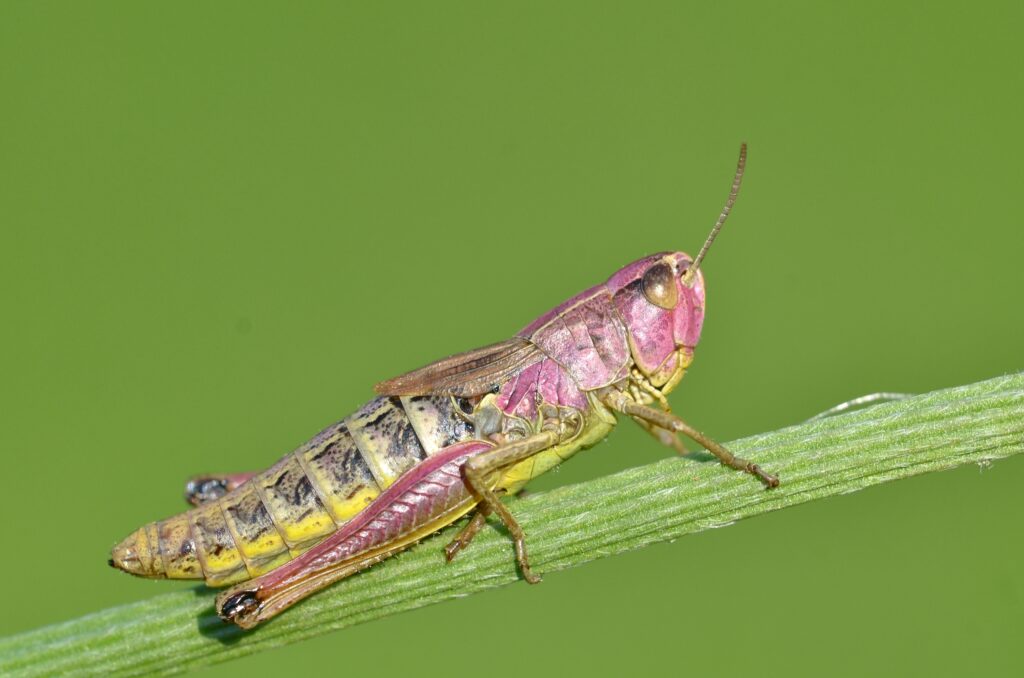
ID Notes: Up to 2.3cm in length. Meadow Grasshoppers are usually green in colour, with some individuals brown or pink-purple coloured (pictured above). The wings are often brown and are long in males, whereas female wings are short and do not reach the end of the abdomen. This species has distinctive black knees and a dark brown stripe running across the flank to the eye. They are similar in appearance to Common Field Grasshoppers, but lack a hairy underside, which can be used to distinguish them from one another. Their song is a burst of around ten chirrups, making a ‘rrr’ sound.
Distribution: Common and widespread throughout Britain. Meadow Grasshoppers can be seen from April to October in damp pastures with long grass. They can also be found in meadows, grassland, heathland and moorland.
Common Green Grasshopper (Omocestus viridulus)
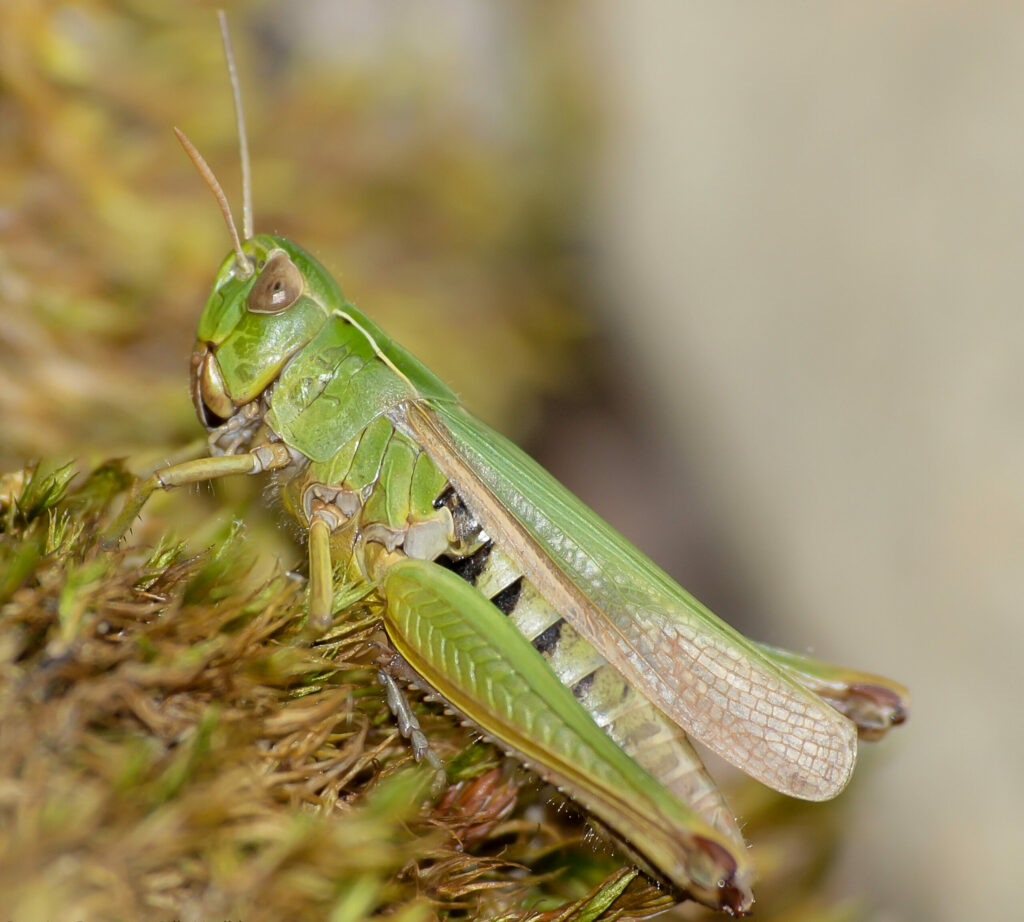
ID Notes: Up to 2.3cm in length. As the name suggests, this species is mostly green in colour, but males can also be olive brown. Lines on the shoulders are incurved and white or cream in colour. Common Green Grasshoppers are winged and can fly, but their wings do not exceed the body’s length. They produce a long, loud ticking song which can last for 20 seconds or more and is reminiscent of a fast-paced freewheeling bicycle.
Distribution: Common and widespread throughout Britain, although a little patchier in the lowlands. This species appears early in spring and can be seen from April to September. It can be found in coarse, moist grass in meadows, woodland rides, hillside pastures and farmland.
Mottled Grasshopper (Myrmeleotettix maculatus)
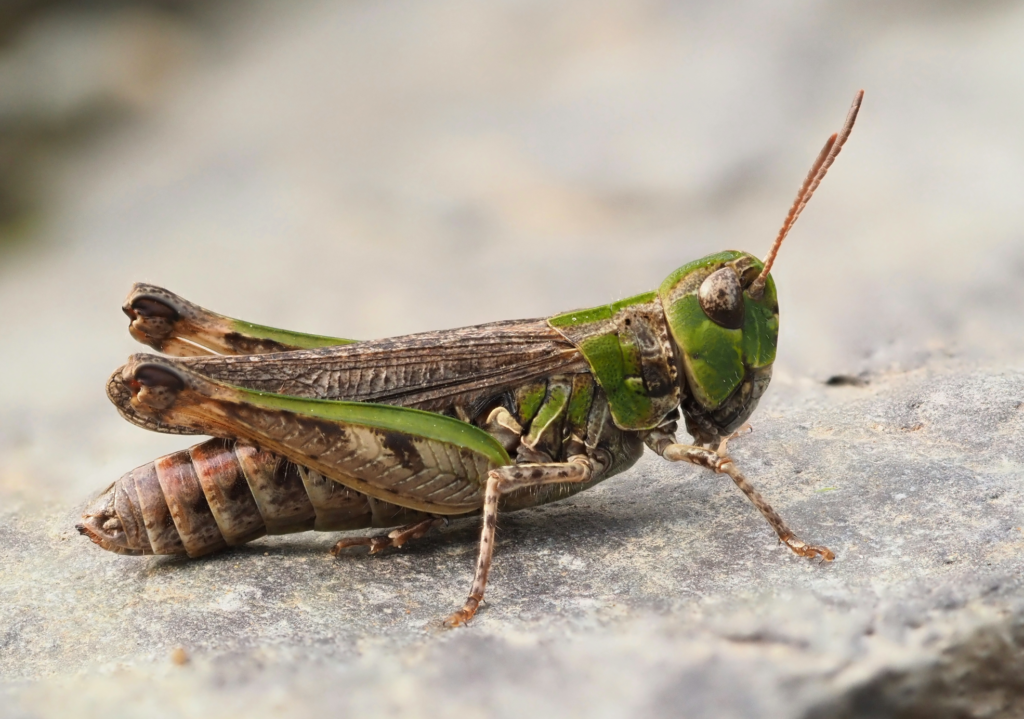
ID Notes: Up to 2cm in length. This small grasshopper is most easily identified by its antennae – males’ are club-tipped, and females’ have a thickened tip. The body has several colour variations including green, brown, grey and orange. Their song is a repetitive ‘zrr’ ‘zrr’ sound lasting around ten seconds before stopping abruptly.
Distribution: Widely distributed across the UK, but uncommon. Mottled Grasshoppers can be found from April to October in areas of dry, short grass with access to rocks or bare ground, including grasslands, heathland and old quarries.
Oak Bush Cricket (Meconema thalassinum)
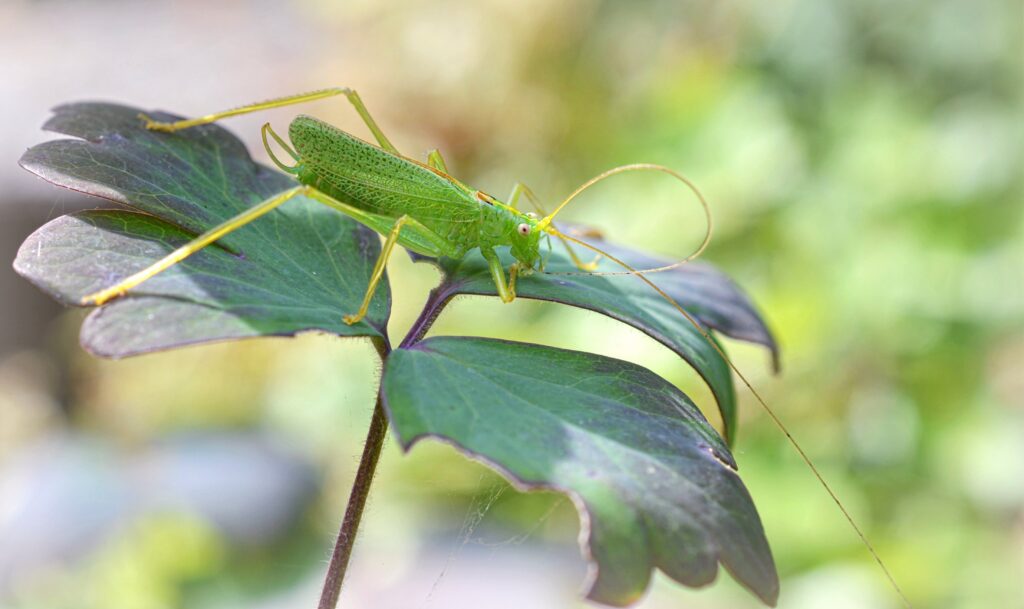
ID Notes: Up to 1.7cm in length. This species is the UK’s only native, arboreal cricket. It has a slender, lime green body with a yellow-orange or brown strip running along its back. Both sexes are fully winged, with wings reaching the end of the abdomen. Females have a long, upturned ovipositor and males have a pair of shorter, rounded claspers. The males do not produce a song, but instead drum their hind legs on nearby leaves.
Distribution: Common, found in England and Wales. The Oak Bush Cricket is common in the midlands and the south but is absent further north. It can be found in the canopy of mature trees in woods, hedges, garden shrubs and other deciduous trees from June to November.
Dark Bush Cricket (Pholidoptera griseoaptera)
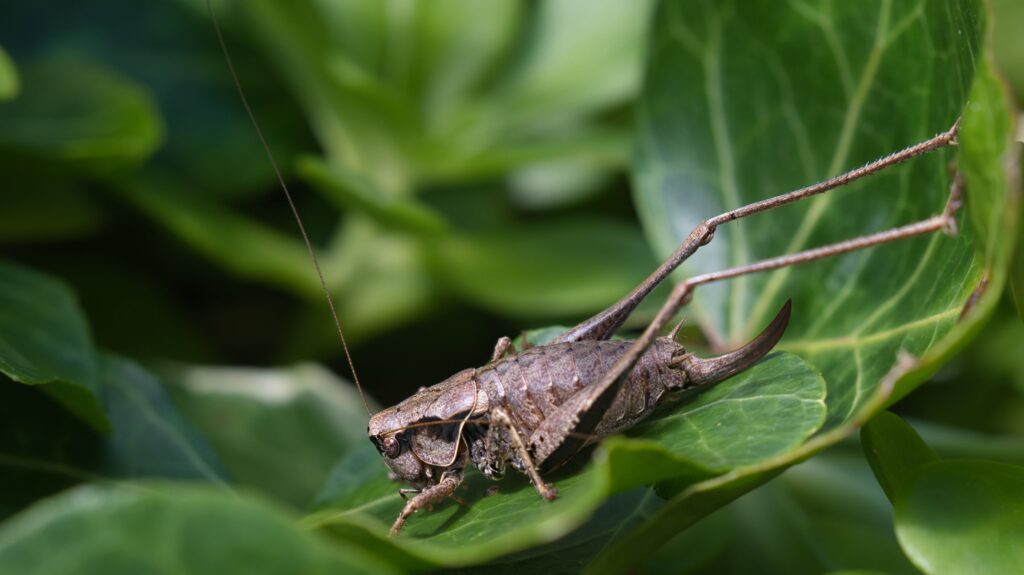
ID Notes: Up to 2.1cm in length. This species is typically reddish to dark brown, with occasional yellow green through the abdomen and a paler area along the top of the thorax. It has very small forewings and long, hair-like antennae. Females have a large, upcurved ovipositor.
Distribution: Fairly common in central and southern England and Wales, where it can be found in woodland, hedgerows, grassland, farmland, towns and gardens. It can often be spotted in large numbers around bramble patches, where they are basking in the sun.
Roesel’s Bush Cricket (Metrioptera roeselii)
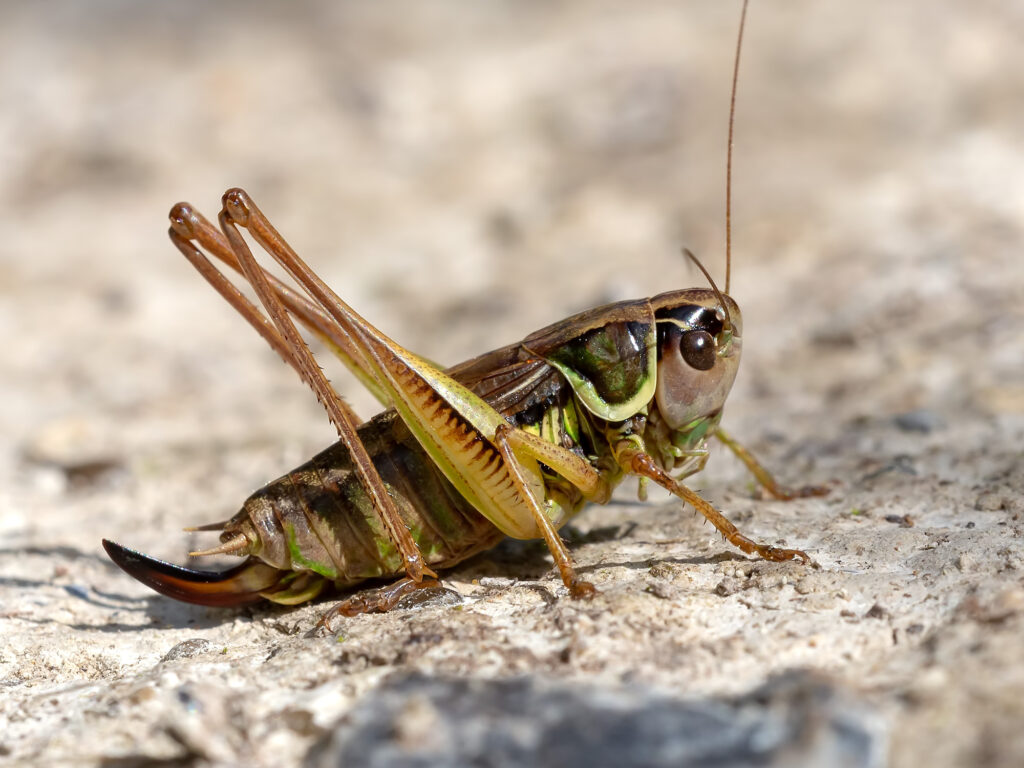
ID Notes: A short-winged and usually flightless species, Roesel’s Bush Crickets are typically dark brown or yellow in colour, sometimes tinged green. They have a green face, slightly orange legs and a cream-coloured margin to their thorax, with two or three yellow spots on the side. Their monotonous song is recognisable for its long, mechanical sound.
Distribution: Common, found mostly in the southeast of the UK, but currently expanding its range north and west. This species can be found from June to October in rough grassland, scrub, salt marshes and damp meadows.
Great Green Bush Cricket (Tettigonia viridissima)
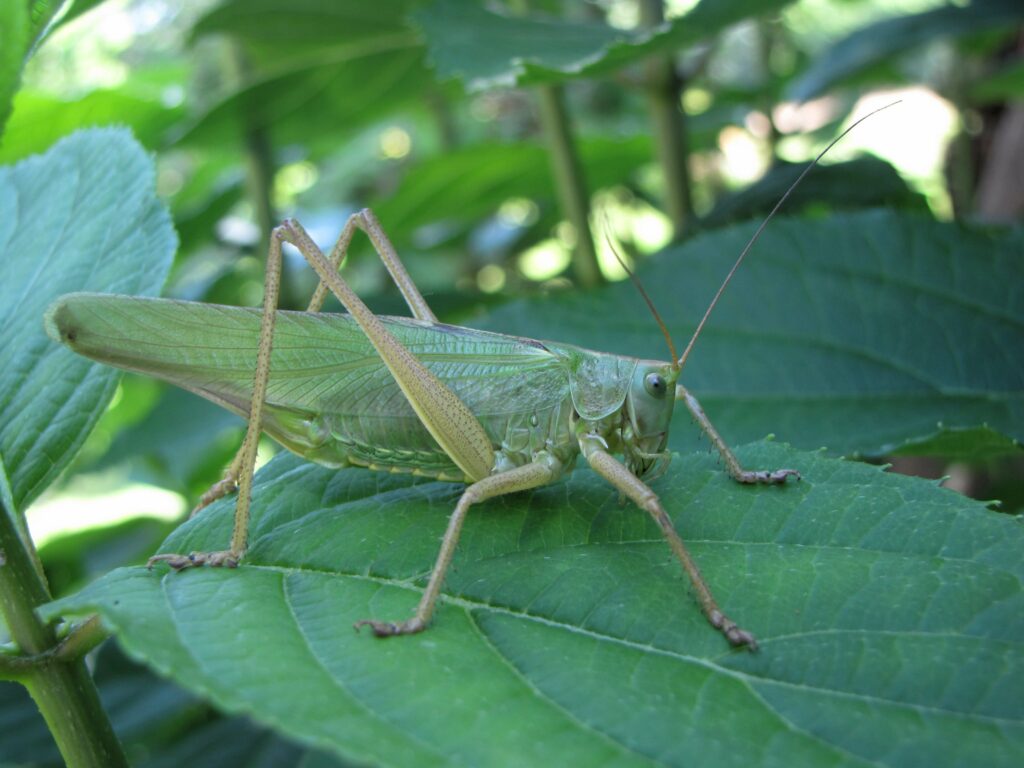
ID Notes: This large bush-cricket can easily be distinguished by its size, growing up to 7cm long. It is a vibrant green with an orange-brown stripe running the length of its back. Their wings are typically longer than the abdomen, and females have a long, downward curved ovipositor. This species has a loud, long song which sounds like a high-pitched sewing machine running continuously.
Distribution: Common throughout south England and Wales. It can be found from May to October in scrub, woodland, grassland and heathland, with a preference for light, dry soils.
Further Reading
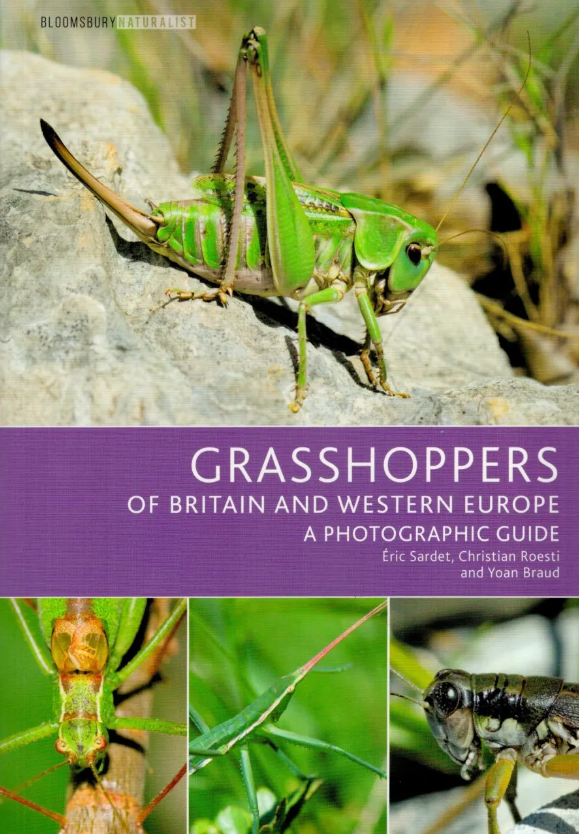 Grasshoppers of Britain and Western Europe
Grasshoppers of Britain and Western Europe
Paperback | June 2021
The first guide to the 261 species of orthopterans of Britain and western Europe ever published. Features stunning, detailed images and information on the distribution and identification criteria. Includes a CD with over 200 orthopteran songs to aid identification.
Paperback | July 2024
A photo-based identification guide covering 28 native breeding species of the UK. This guide is part of FSC’s AIDGAP series (Aids to Identification in Difficult Groups of Animals and Plants), providing accessible identification tools for naturalists over the age of sixteen.
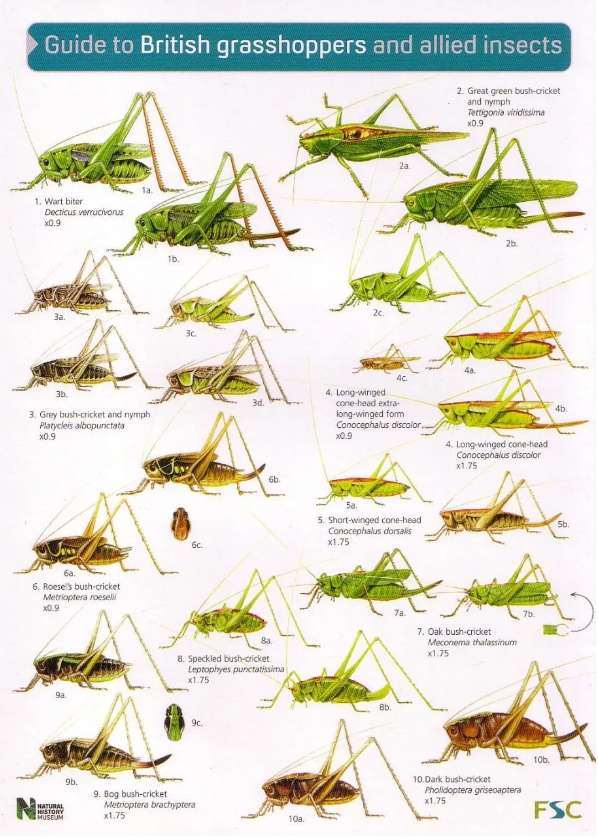 Guide to British Grasshoppers and Allied Insects
Guide to British Grasshoppers and Allied Insects
Unbound | August 1999
A reliable, fold-out chart with an introduction and a key to British grasshoppers and related insects, ideal for carrying in-field.

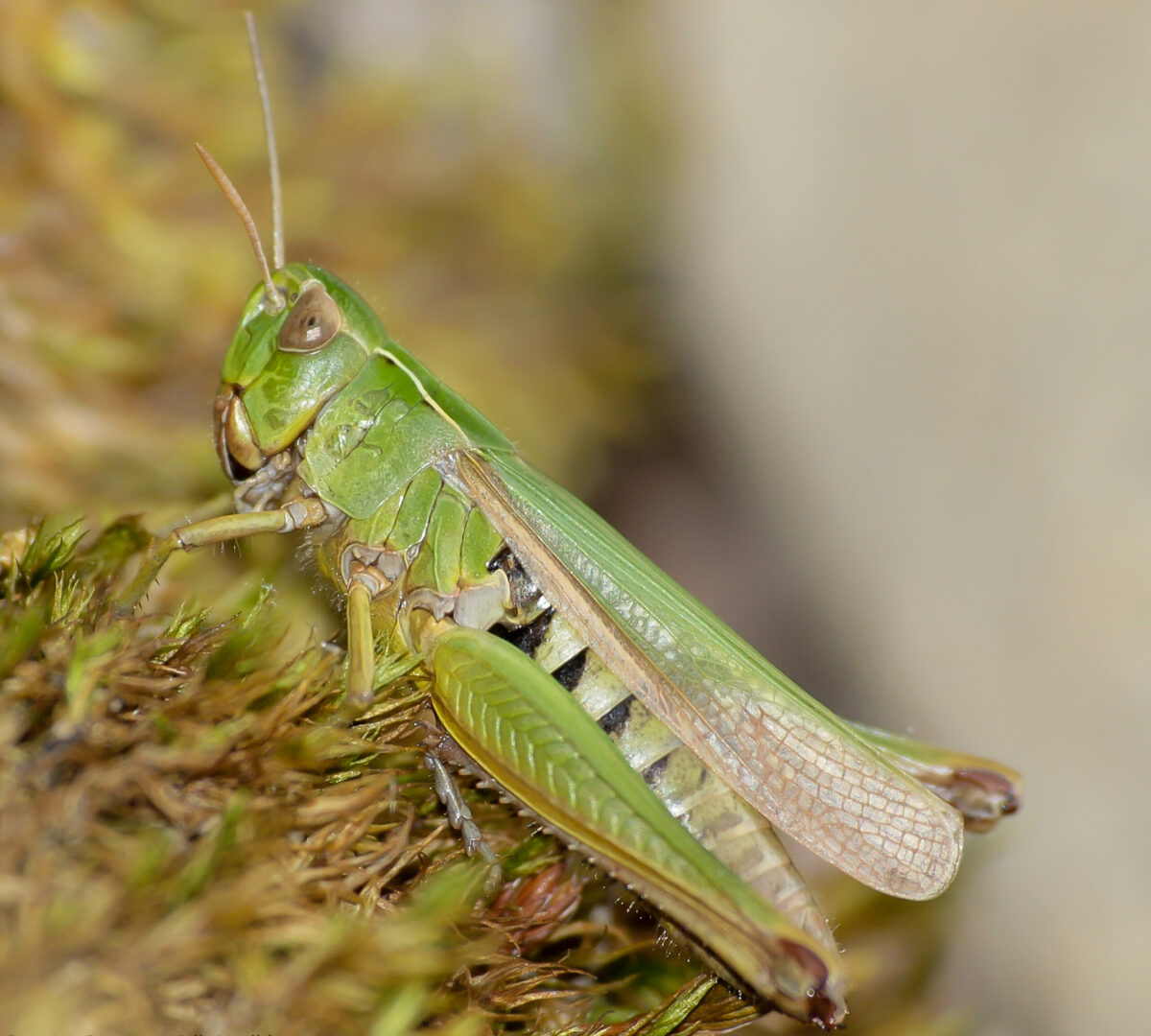
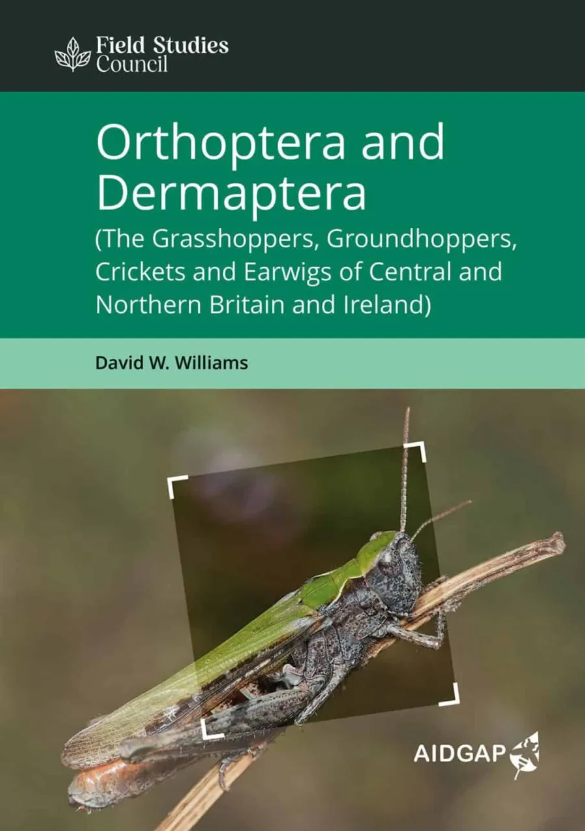 Orthoptera and Dermaptera
Orthoptera and Dermaptera